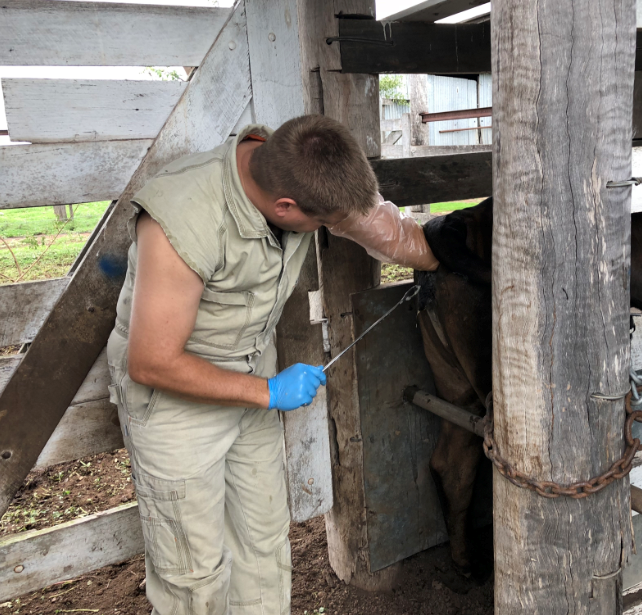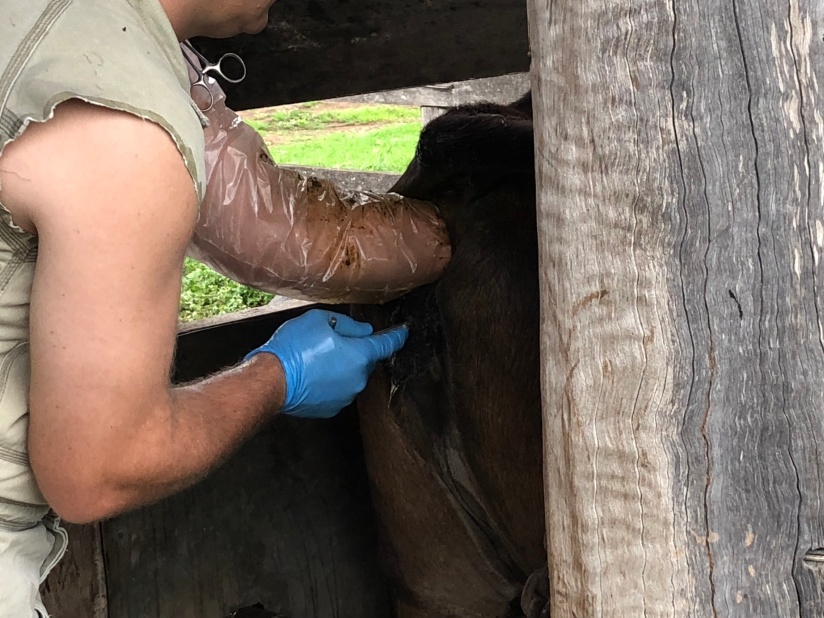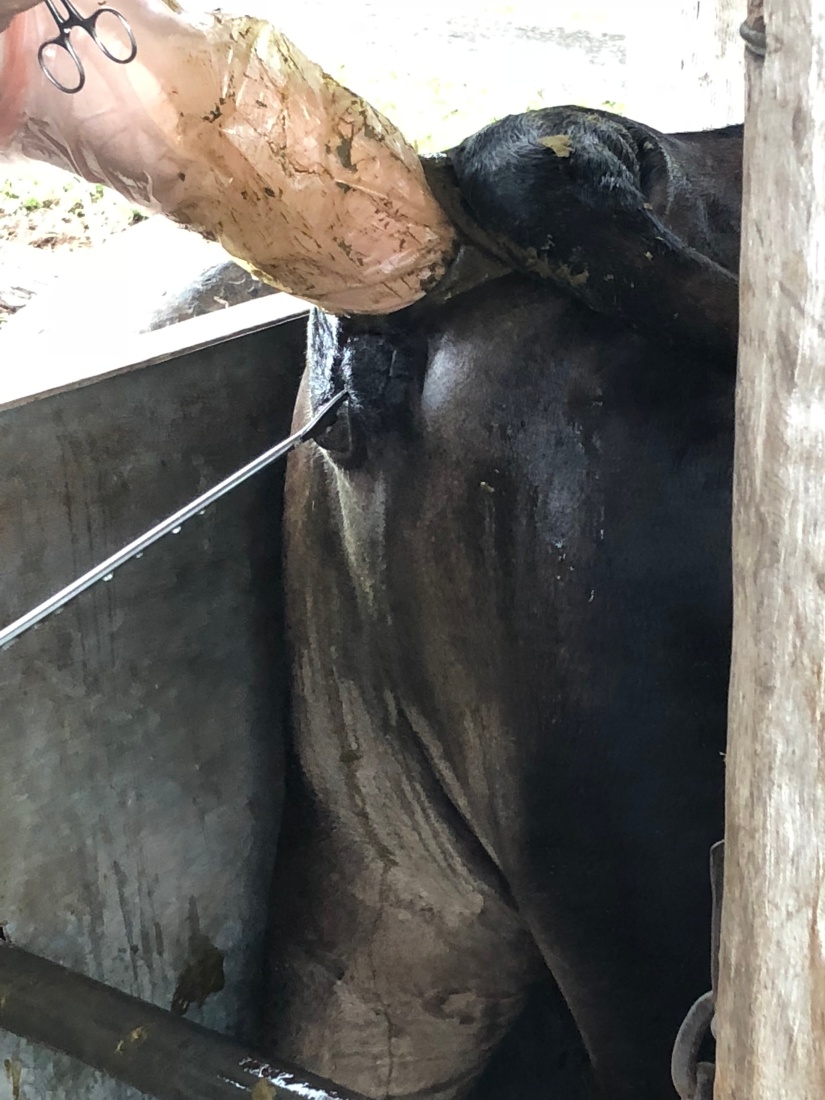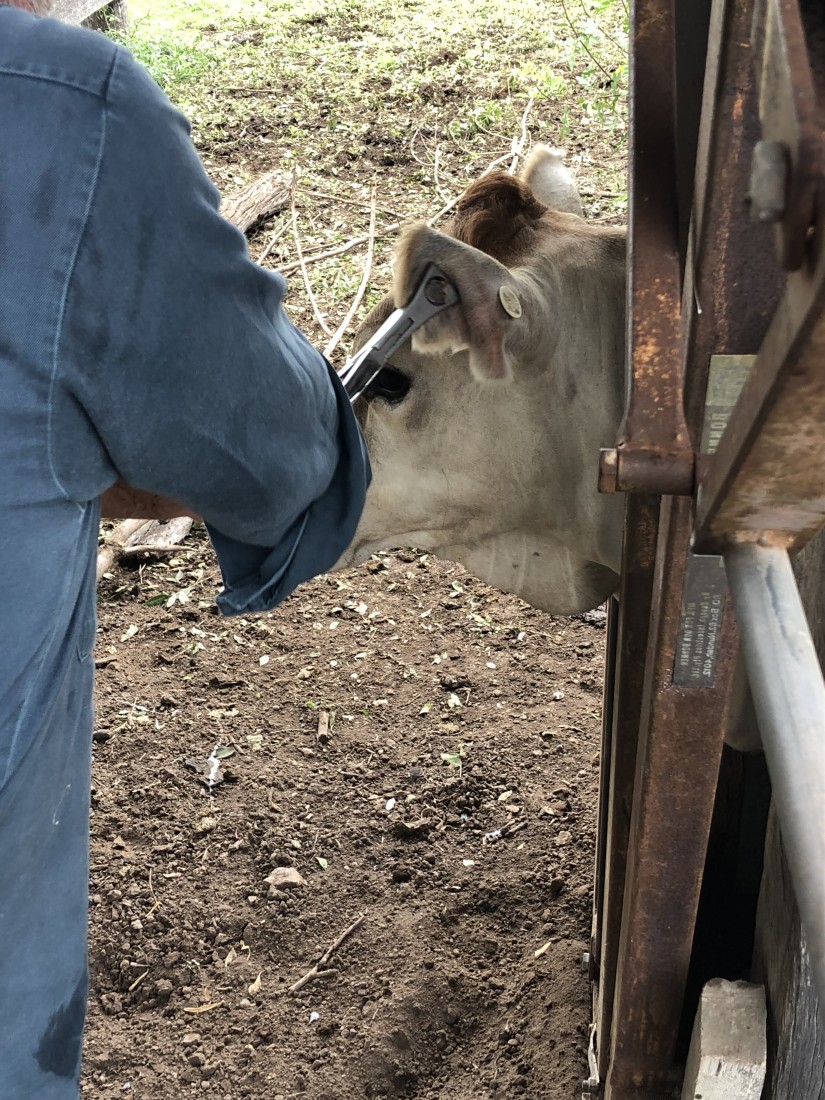Cattle Spaying

Cattle Spaying is a service we offer at Gayndah Vet Surgery. It is a management tool that involves surgical removal of the ovaries – the primary source of oestrogen and progesterone in females – thus eliminating oestrus cycles and pregnancies. Effectively these animals become steers in body appearance, weight gains and behaviour.
In earlier years, spaying was done with a flank incision or passage incision. The trans-vaginal approach, also called the Willis Dropped Ovary Technique (WDOT) is faster, less labour intensive, cheaper and safer. It is also much better for the welfare of the animals by comparison to flank spaying or passage spaying.
Spaying is useful when females can’t be separated from males. It allows cull females to fatten and avoids unwanted oestrus (heat), pregnancy, calving and lactation. It also allows a “fattening for slaughter” type farming using females instead of males, with equivalent weight gains. Spayed heifers draw premium prices from some feedlot buyers and gain weight faster than intact heifers, mainly by avoiding the slowing of growth caused by heifers coming into oestrus (heat) for a couple of days every 3 weeks.
The ideal age to spay is at puberty, from about 200kg upwards. Heifers must be large enough to permit a hand in the rectum (as for preg testing). It is possible to spay heifers up to 10 weeks pregnant. Older cows can also be spayed easily, provided they are not pregnant more than 10 weeks. Webbing (cutting the fallopian tube to prevent further pregnancy, while leaving the ovary intact to support existing pregnancy) is not possible with this method of spaying. One major downside to webbing is that cows will still cycle, coming into season every 3 weeks.
Safety of the procedure is excellent, with less than 1 in 500 mortality when done by a skilled veterinarian. Wild animals thrashing around in the crush are the biggest cause of deaths (usually from damage to intestines by the spay tool). This is why we are very careful to remove the tool when animals begin to move, and take the time before cutting to ensure only the ovary will be cut. This does slow the job down and reduce the number of head spayed per hour and per day, but the good results are worth it.
Welfare of spayed animals is fantastic, being a virtually painless procedure. There is a legal requirement to earmark spayed cattle with a 1.5cm hole in the near (left) ear, which is by far the most painful part of the whole procedure.
The cost is $16 per head plus GST and travel to and from the property. With a good setup it is usually possible to perform 10 to 15 per hour. Wild cattle will reduce this rate per hour. A head bail and kick gate are essential, and shade is nice! An assistant is required to operate the disinfectant wash and restrain the tail. This usually works in well as the yard work pauses while each animal is spayed, freeing up the person operating the head bail, etc. to hold the tail and operate the wash hose. We are happy to discuss jobs involving long distance travel.
The procedure consists of the following steps:
Restraining the animal using a head bail and kick gate. The head bail is essential to give space between the animal and the kick gate, otherwise the operator’s arm/hand is at risk if an animal drops its rear end to the ground. The head bail is also needed to allow the ear to be marked at the end of the procedure.
The operator puts one hand into the rectum to check for pregnancy, locate the ovaries and assess the their size before the appropriate tool is selected, just as if performing manual pregnancy testing;
The assistant holds the tail out of the way and hoses the disinfectant wash solution onto the vulva. The spay operator uses their free hand to rub/pull off any dags and stretch the skin to clean the folds.
Once the vulva is in a satisfactory state of cleanliness (ie. perfectly clean) the operator takes the appropriate size tool and inserts it into the vulva. The tool is advanced forwards until the point sits just above the cervix. The operator moves the rectal hand (and rectum of the cow) out of the way and the spay tool is pushed forwards, puncturing the wall of the vagina and entering the abdomen.
The operator then uses the rectal hand to pick up and manipulate an ovary through the hole in the spay tool, then pulls the tool backwards while holding the ovary forwards. This slides the ovarian attachments into the slotted part of the hole, where a sharpened edge at the front of the slot tears through the attachments and leaves the ovary inside the cow’s abdomen, unattached. The “dropped ovary” then dies and is reabsorbed by the cow’s body over time. Occasionally an ovary will be so loosely attached that it will not tear off until it is pulled back into the vagina by the tool. This is not an issue, but it does provide an opportunity to see what the operator is actually working on. If this happens when removing the first ovary it is usually necessary to re-clean and re-insert the tool to remove the second ovary, as the tool is usually contaminated by the skin when it is withdrawn too far from the abdomen.
This procedure is repeated for the second ovary, and the spay operation is finished.
The cow then has a hole punched in the left (near side) ear to indicate she has been spayed.
If an animal is very agitated and behaving badly (and farmers always ask to have their worst behaved animals spayed!) it is not uncommon to have to remove the tool for the safety of the cow, then repeat the cleaning and insertion steps, sometimes over and over again. Once they stand still and the tool is in the abdomen it is usually only a 30 second job to remove both ovaries.
It is vital to achieving good outcomes that the spay tool is perfectly clean when inserted. It is impossible to claim that a tool is disinfected/sterilised adequately when it is not clean. To achieve this the cow’s vulva is carefully washed and any faecal material dislodged from the hair and skin folds of the vulva. The clean, disinfected tool is then only in contact with clean, disinfected skin and mucosa of the vulva. This prevents contaminating the abdomen with infectious organisms.

An assistant disinfects the vulva area

The willis spay tool is then inserted into the vagina

The ovary is manipulated through the tool

The ovary is then removed, either coming out with the spay tool or falling loose into the abdominal cavity.
The removed Ovary
 A hole is punched into the left (near side) ear to identify a spayed female.
A hole is punched into the left (near side) ear to identify a spayed female.


